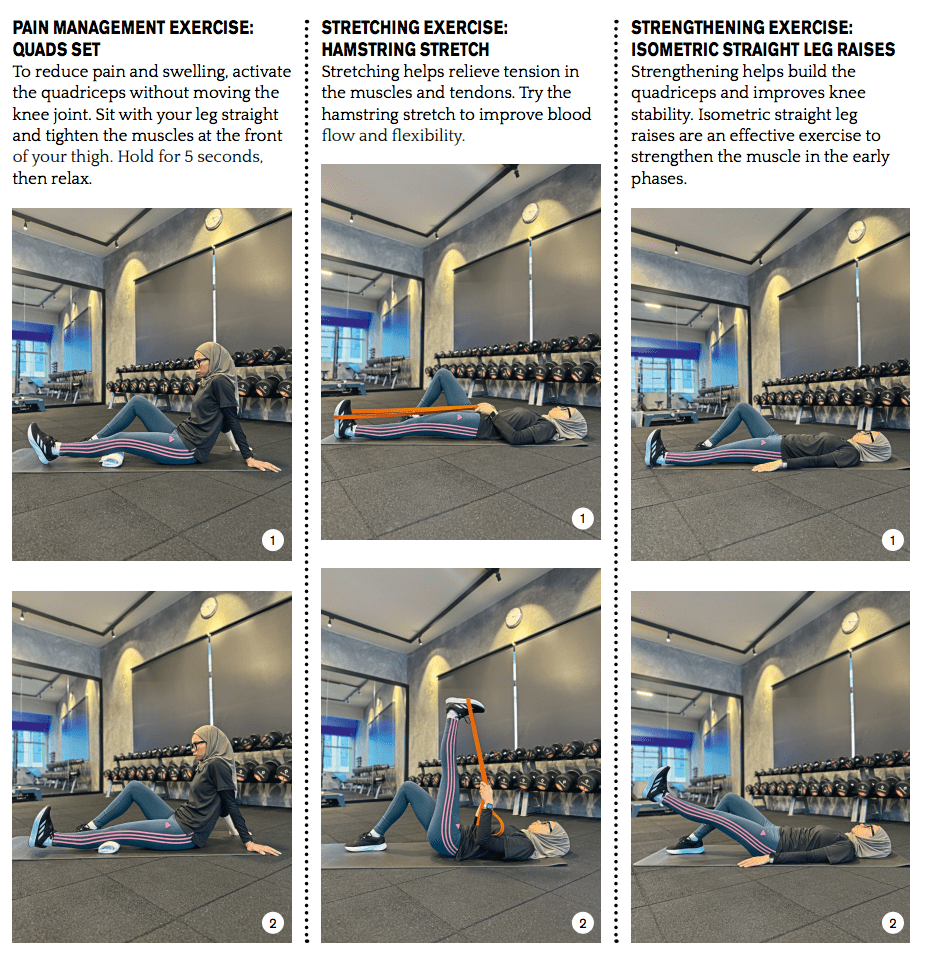In our ongoing series on injury management and recovery, we explore common injuries, their causes, symptoms, and treatments. Today, we focus on meniscus tears, examining their nature and symptoms, as well as practical exercises and treatments for recovery and improved mobility. Whether your goal is to stay healthy, enhance physical performance, or recover quickly from injuries, our guide is here to help. Let’s get started.
Understanding Meniscus Injury
The primary function of the medial and lateral menisci is to absorb force and assist in nourishing the knee joint. A meniscus injury involves a tear in the knee cartilage. This injury is common among athletes but can occur in anyone through sudden twisting movements (traumatic) or due to degenerative changes as we age.
Classification of Meniscus Injuries
There are several types of meniscus tears. Three of the most common examples are:
• Radial Tear: A tear that starts from the inner edge of the meniscus and extends outward.
• Bucket Handle Tear: A longitudinal tear where a portion of the meniscus is displaced, resembling a handle.
• Horizontal Tear: A tear that runs horizontally through the meniscus.
Other types of meniscus tears include longitudinal tears, oblique tears, and complex tears, which involve a combination of multiple tear patterns.
Differences in Meniscus Injuries
Meniscus injuries can vary greatly, impacting symptoms, treatment, and recovery. Acute tears typically occur in younger, active individuals due to sports or trauma, presenting immediate symptoms such as pain, swelling, and sometimes knee locking. In contrast, degenerative tears are more common in older adults due to wear and tear over time, with symptoms developing gradually and potentially including chronic pain and stiffness.
Symptoms of a Meniscus Injury
If you have a meniscus injury, you might experience pain in the knee, swelling, stiffness, and difficulty moving your knee. Additionally, you may feel your knee catching or locking, as well as experiencing instability or a sensation that your knee is giving way.
Managing Meniscus Tear Injury
Effectively managing the condition involves a combination of pain relief, exercises, and lifestyle adjustments. Here are some practical strategies to help alleviate the symptoms of a meniscus injury:
Pain Management
R.I.C.E (Rest, Ice, Compression, Elevation):
This is crucial within the first 24 hours to help reduce pain and inflammation. Place an ice pack over the affected area and elevate the leg above heart level for 15 minutes.
Exercises
The following exercises are designed to help restore knee function. Ensure you are in a safe environment and using proper form. Stop immediately if the pain becomes unbearable.
Pain Management Exercise: Quads Set
Stretching Exercise: Hamstring Stretch
Strengthening Exercise: Isometric Straight Leg Raises
WARNING: Perform all exercises carefully and within your pain tolerance.
Conclusion
Recovering from a meniscus injury is a journey that requires time and patience, but with the proper physiotherapy exercises, you can effectively manage pain, restore knee function, and strengthen your muscles. By consulting with a physiotherapist, you can create a personalised plan tailored to your specific needs, ensuring the best possible outcome. Taking proactive steps to care for your knee now will help you stay active and healthy in the long run.
Shikin is a fitness coach and physiotherapist at Pinnacle Fitness. She holds a Bachelor’s Degree in Sports Science (Exercise Science) and a Diploma in Physical Therapy. For more information, please contact us at 010-652 6526 or info@pinnacle.net.my





